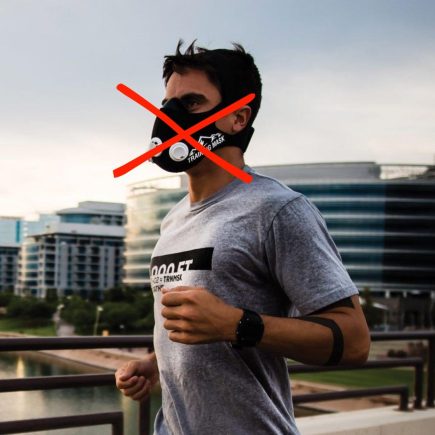Altitude training and training masks (which are growing in popularity and not genuine high-altitude simulating devices) are two popular methods of enhancing athletic performance. While both methods aim to improve an athlete’s ability to use oxygen, genuine altitude training has been shown to be a more effective method than these supposed “altitude masks” for several reasons.
Higher altitude:
Altitude training unless truly on a mountain requires a machine to reduce the amount of oxygen. The training mask does not have this and therefore cannot simulate high altitude. At high altitudes, the air pressure is lower, and there is less oxygen in the air. This leads to a physiological response in the body that includes increased red blood cell production and improved oxygen delivery to the muscles. A training mask, on the other hand, restricts airflow but does not actually change the concentration of oxygen in the air being breathed.

Longer duration:
Altitude training is usually done longer than a training mask, which can be worn for short periods during exercise. Mile High Training’s sleep canopies and and tents allow your body to breath and train at altitude while sleeping for hours at a time.*Link to products Athletes who train at high altitudes can spend weeks or months at altitude, giving their bodies time to acclimate and make physiological adaptations that lead to better performance.
Reduced risk of injury:
Wearing a training mask can put added stress on the respiratory system and increase the risk of injury. On the other hand, altitude training has been shown to be safe and effective when done under the guidance of a trained professional.
Transfer of training effects:
The physiological adaptations gained from altitude training have been shown to transfer to sea-level performance. This means that athletes who train at high altitudes can maintain their performance gains when they return to sea level. However, the same cannot be said for training with a mask, which does not lead to the same physiological adaptations as training at altitude.
Better overall training stimulus:
Finally, altitude training provides a more comprehensive training stimulus than a training mask. Training at high altitudes not only improves oxygen delivery but also challenges the cardiovascular, respiratory, and neuromuscular systems. This can lead to better overall fitness and performance.
In conclusion,
Training masks do not accomplish the same thing as altitude training by any stretch of the imagination. Altitude training is a more effective method for improving athletic performance. The physiological adaptations gained from high altitude training are more significant and have been shown to transfer to sea-level performance. Additionally, altitude training provides a more comprehensive training stimulus that challenges multiple systems in the body, leading to better overall fitness and performance.

